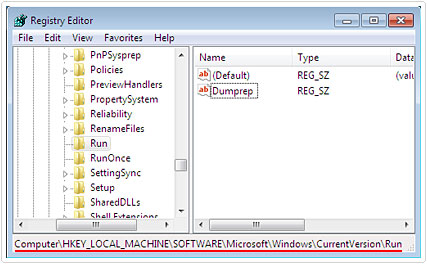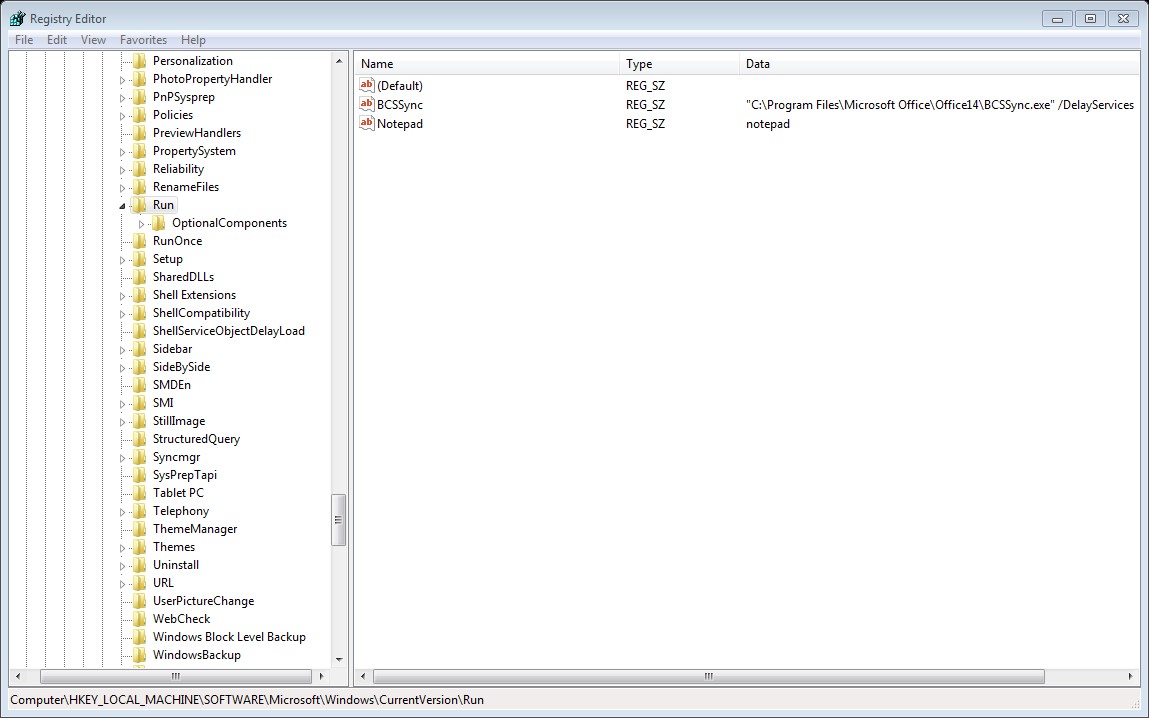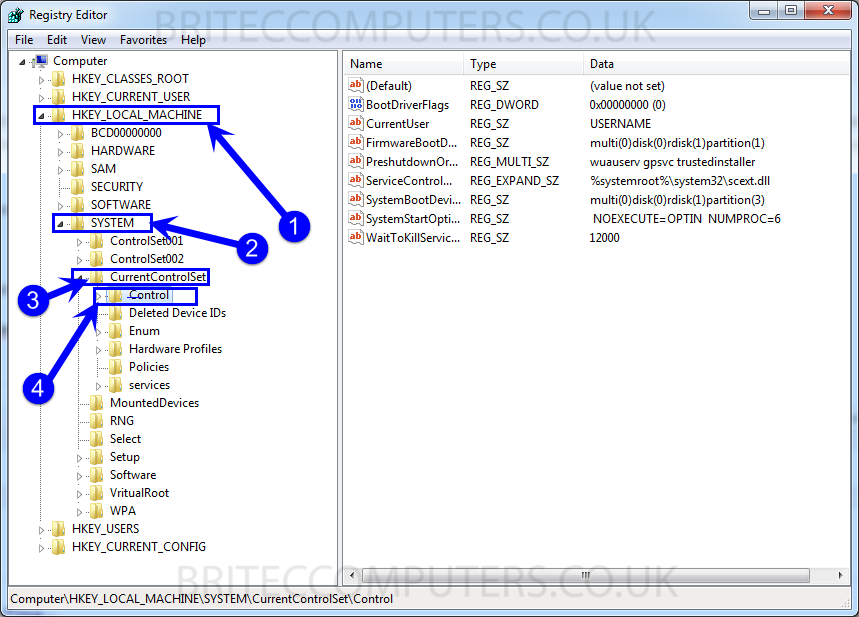- Hkey_local_machine Software Microsoft Windows Currentversion Runservicesonce
- Hkey_local_machine Runonce
- Hkey_local_machine Software Javasoft Java Runtime Environment Not Found
For some reason I need to run CMD on windows startup. I need to run CMD with arguments. Is it possible to do via registry key?
I am trying the
Nov 16, 2018 HKEYLOCALMACHINESOFTWAREPoliciesGoogle - is missing I am using Google Chrome Version 57.0.2987.133 on a domain, as a non-admin user; but I have administrative access available to me (I am IT support). May 25, 2017 HKEYLOCALMACHINESOFTWAREMicrosoftWindows NTCurrentVersionProfileList. Now i cant start windows 10. I can only see a black screen with cursor. I see a blue screen saying ' windows is getting ready dont turn off your computer 'Windows 10, pls any help.Post moved by the moderator to the appropriate forum category. I have temporarily changed HKEYLOCALMACHINE to HKEYCURRENTUSER, but I would like to get it running properly. I had the same problem with the program that Windows Installer installs, until I modified the manifest file to give my program access to HKEYLOCALMAHCINE on Windows 7.

But how can I add arguememnts to it, if that's possible?
I made this simple task 'C:WindowsSystem32cmd.exe /c notepad.exe' But dont have notepad to be run by cmd. What can be the reson?
Can I be missing something? I have made two records 1 in HKLM / RUN/ 'C:WindowsSystem32cmd.exe /c notepad.exe' 2 in HKEY_CURRENT_USER/ RUN the same record 'C:WindowsSystem32cmd.exe /c notepad.exe' But the cmd doesnt start notepad
2 Answers
Your example has the lines in the wrong order for a *.reg file. The following should work:

This will only run once on bootup. If you want to run every time you log in, then you need to change it to:

from CMD you can Run this
REG ADD HKEY_LOCAL_MACHINESOFTWAREMicrosoftWindowsCurrentVersionRunOnce /t REG_SZ /d ' '
or manually you can go to this structure and string value
Not the answer you're looking for? Browse other questions tagged windowscmdregistry or ask your own question.
Fixing Windows errors, tweaking Windows features, or completely removing a program can sometimes require you to edit the Windows registry. This page provides help on how to open and view the Windows registry, as well as edit and delete registry values.
CautionBefore editing or changing anything in the Microsoft Windows registry, it's recommended that you backup the registry. We also highly recommend that anyone new to the registry become familiar with all the Windows registry basics.
How to open the Windows registry
To open the Windows registry, follow the steps below for your version of Windows.
NoteIf you have restricted access to the Windows computer you're logged into, you may not be able to access the Windows registry.
Windows 10
- Type regedit in the Windows search box on the taskbar and press Enter.
- If prompted by User Account Control, click Yes to open the Registry Editor.
- The Windows Registry Editor window should open and look similar to the example shown below.
Windows 8
- Type regedit on the Start screen and select the regedit option in the search results.
- If prompted by User Account Control, click Yes to open the Registry Editor.
- The Windows Registry Editor window should open and look similar to the example shown below.
Windows 7 and earlier
- Click Start or press the Windows key.
- In the Start menu, either in the Run box or the Search box, type regedit and press Enter. In Windows 8, you can type regedit on the Start screen and select the regedit option in the search results. In Windows 10, type regedit in the Search box on the taskbar and press Enter.
- If prompted by User Account Control, click Yes to open the Registry Editor.
- The Windows Registry Editor window should open and look similar to the example shown below.
How to browse the Windows registry
When most users need to edit their registry, they're given the location or path of where the registry value is located and what to change. Below is an example path for a commonly accessed registry subkey. To browse to this location, you first start by opening the HKEY_LOCAL_MACHINE key (folder). In this key, you will see the SOFTWARE folder, then Microsoft, Windows, CurrentVersion, and finally the Run folder.
HKEY_LOCAL_MACHINESOFTWAREMicrosoftWindowsCurrentVersionRun
TipEach backslash (') in a registry path represents another folder in the registry, with the name of that folder following the backslash.
After navigating to the above registry path, you'll see a window similar to the example below. In this example, you can see four different string value keys, which in this case are pointing to each of the programs Windows runs each time the computer is turned on or restarted.
How to edit a Windows registry value
To edit a registry value, double-click the name of the value you want to edit. For example, if we were to double-click the 'IntelliPoint' value in the example above, a new window would appear that would allow us to change the value of the Data. In this case, we could change the file path of where the 'ipoint.exe' file is located for the IntelliPoint driver.
How to delete a Windows registry value
Hkey_local_machine Software Microsoft Windows Currentversion Runservicesonce
To delete a registry value, highlight any registry Name and then press the Delete key on the keyboard. For example, if we did not want the IntelliPoint program to load each time Windows starts, we could highlight IntelliPoint and then press the delete key.
Windows registry shorthand and abbreviations
Hkey_local_machine Runonce
In some documentation and online forums, the registry values may be abbreviated. For example, instead of saying 'HKEY_LOCAL_MACHINE,' it is easier to say and write 'HKLM.' For a listing of registry terms and shorthand, see our registry definition.
Hkey_local_machine Software Javasoft Java Runtime Environment Not Found
Additional information
- See our registry definition for further information and related links.